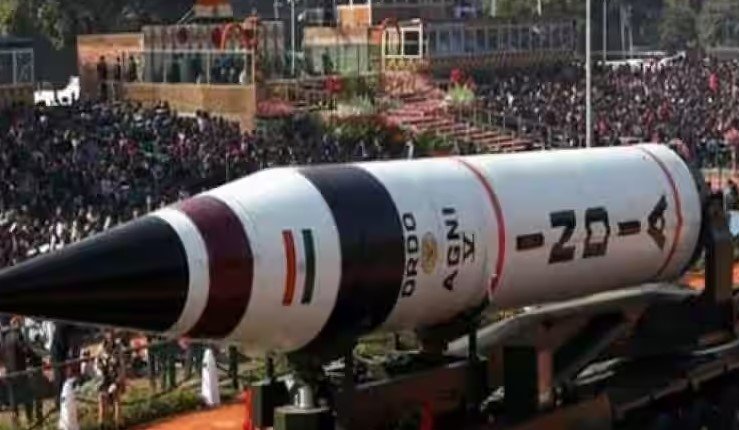India is taking a bold leap in air defence. DRDO’s Project Kusha — described as India’s own answer to Russia’s S-500 and the US’s THAAD — is being hailed as a major stride in national security.
The announcement by DRDO chief Samir V. Kamat on June 8 has fired up defence analysts and military experts alike. Built for a world of stealth jets and hypersonic threats, Project Kusha is expected to become a central piece in India’s defence playbook by 2029.
A Response Forged in the Fires of Conflict
The buzz around Project Kusha isn’t just about ambition. It’s also about timing.
Just weeks after the May 2025 flare-up between India and Pakistan — where unmanned aerial vehicles and missile systems took centre stage — New Delhi’s need for a stronger, self-reliant air defence became painfully clear.
India has long relied on foreign systems like the Russian S-400, but those days may be numbered. Project Kusha promises to offer something more flexible, more precise, and — crucially — built at home.
With a projected 80–90% interception success rate and capacity to tackle targets travelling at Mach 7, this isn’t just another defence system. It’s a signal.

What Exactly Is Project Kusha?
To put it simply, this is India’s bet on itself.
Project Kusha — or the Extended Range Air Defence System (ERADS) — is a multi-layered, indigenous shield built to shoot down anything from stealth bombers to ballistic missiles. It’s also referred to in some circles as PGLRSAM (Precision-Guided Long-Range Surface-to-Air Missile).
The DRDO says it fills the gap between India’s existing medium-range Akash and Barak-8 systems (which max out around 80 km) and the more expansive S-400s (with a reach of 400 km).
In short, it gives the military a home-grown option for covering that mid-to-long range air defence zone.
Three Missiles, Three Threat Levels
Project Kusha isn’t just one big missile. It’s a whole ecosystem of three interceptors working together across layered distances. And each one is smart, nimble, and deadly.
• M1 Interceptor (150 km): Takes care of fighter jets, drones, and cruise missiles. It’s small — just 250 mm wide — but packs serious heat with thrust vector control and a dual-pulse solid rocket motor for rapid manoeuvres.
• M2 Interceptor (250 km): Goes after bigger fish — think AWACS and anti-ship ballistic missiles. Same agile kill vehicle as M1, just more reach.
• M3 Interceptor (reportedly in design): Likely intended for threats beyond 350 km, possibly including hypersonic glide vehicles.
This isn’t just overkill. It’s necessary. Today’s skies are cluttered with stealthy, fast-moving threats. A one-size-fits-all missile simply doesn’t cut it anymore.
How Kusha Stacks Up Against Global Giants
Let’s face it — comparisons were inevitable.
Is Project Kusha really in the same league as Russia’s S-500 or America’s THAAD? Here’s a quick breakdown of what’s known so far:
| System | Country | Max Range | Hypersonic Capability | Deployment Status |
|---|---|---|---|---|
| S-400 | Russia | 400 km | No | Operational |
| S-500 | Russia | 600 km | Yes | Limited Ops |
| THAAD | USA | 200 km | Yes | Operational |
| Project Kusha | India | 250–350+ km | Yes (Mach 7+) | By 2028–2029 |
What stands out here isn’t that Kusha beats everyone in raw numbers. It’s the fact that it’s being built at home — by DRDO, for the Indian Armed Forces — using Indian brains and Indian hands.
That’s a big deal.
Why Kusha Matters for India’s Strategic Posture
Geography plays a huge role in this story.
India’s two key security concerns — Pakistan and China — both possess increasingly sophisticated aerial arsenals. China’s work on hypersonic glide vehicles has rattled several countries, and Pakistan has leaned heavily on drones and tactical missiles.
Kusha could help shift the balance, or at least bring it closer to equilibrium.
It’s not just about intercepting missiles. It’s about credibility. With Kusha, India signals that it’s not waiting for allies to plug its defence gaps.
There’s also the “Atmanirbhar Bharat” angle — a government-wide push to reduce foreign defence imports and grow domestic capability.
Is Deployment Still Years Away?
Yes, but timelines matter less than progress.
DRDO is targeting 2028–2029 for full deployment. That might sound far off, but in defence development terms, it’s practically around the corner.
The real takeaway? The project is already well underway. It’s not a concept sketch. It’s being tested, refined, and fast-tracked.
And given the urgency the 2025 conflict injected into India’s defence planning, don’t be surprised if those timelines shrink a little.
One Eye on the Sky, the Other on the Budget
Big projects like this come with big price tags. That’s not news.
But Kusha may still offer a better deal in the long run compared to perpetual imports.
Plus, DRDO has already said they’re designing Kusha to integrate seamlessly with other Indian systems like Akash, Barak-8, and even the S-400. That saves money, improves interoperability, and reduces chaos in the command chain.
Here’s something else: countries like Vietnam, Philippines, or even UAE — all looking for capable, non-NATO-aligned defence systems — might be keeping a close eye on Kusha’s export potential.
The Air Force and Navy Are Already Watching Closely
Both the Indian Air Force and Indian Navy are expected to be among the first users. Think about what that means — naval task forces with better ASBM defences, and air bases that are harder to cripple with long-range missile barrages.
Even peacetime patrols could benefit from having that extra layer of defence overhead.
One official familiar with early tests summed it up like this: “It gives us breathing room. And in modern warfare, that’s gold.”
